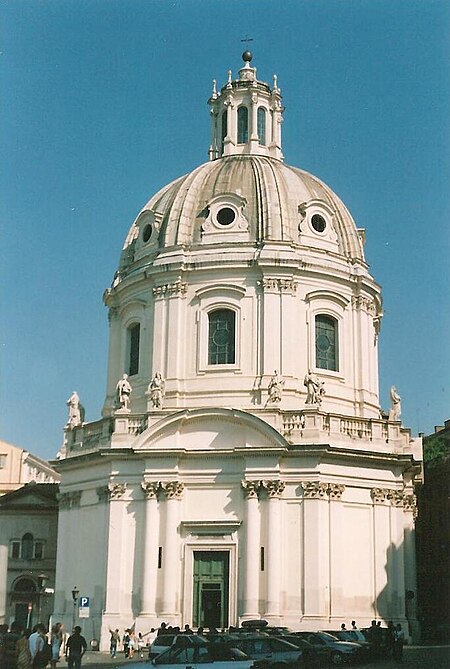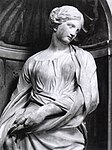Santissimo Nome di Maria al Foro Traiano

The Church of the Most Holy Name of Mary at the Trajan Forum (Italian: Santissimo Nome di Maria al Foro Traiano, Latin: Ss. Nominis Mariae ad forum Traiani) is a Roman Catholic church in Rome, Italy. This church should not be confused with the church Santissimo Nome di Maria in Via Latina in south-east Rome. The pale marble church stands in front of the Column of Trajan, a few dozen steps from the similarly domed, but externally more colorful, church of Santa Maria di Loreto. The feast of the Holy Name of Mary was instituted by Pope Innocent XI after the victory of the Austrian-Polish armies under the command of John III Sobieski over the Turks at the Battle of Vienna in 1683. Abbot Giuseppe Bianchi instituted devotion to the most holy name of Mary in 1685 at Santo Stefano del Cacco, and soon afterwards established the Congregation of the Most Holy Name of Mary, which was formally approved in 1688.
Excerpt from the Wikipedia article Santissimo Nome di Maria al Foro Traiano (License: CC BY-SA 3.0, Authors, Images).Santissimo Nome di Maria al Foro Traiano
Via di Sant'Eufemia, Rome Municipio Roma I
Geographical coordinates (GPS) Address External links Nearby Places Show on map
Geographical coordinates (GPS)
| Latitude | Longitude |
|---|---|
| N 41.896141666667 ° | E 12.484555555556 ° |
Address
Santissimo Nome di Maria al Foro Traiano
Via di Sant'Eufemia
00187 Rome, Municipio Roma I
Lazio, Italy
Open on Google Maps









